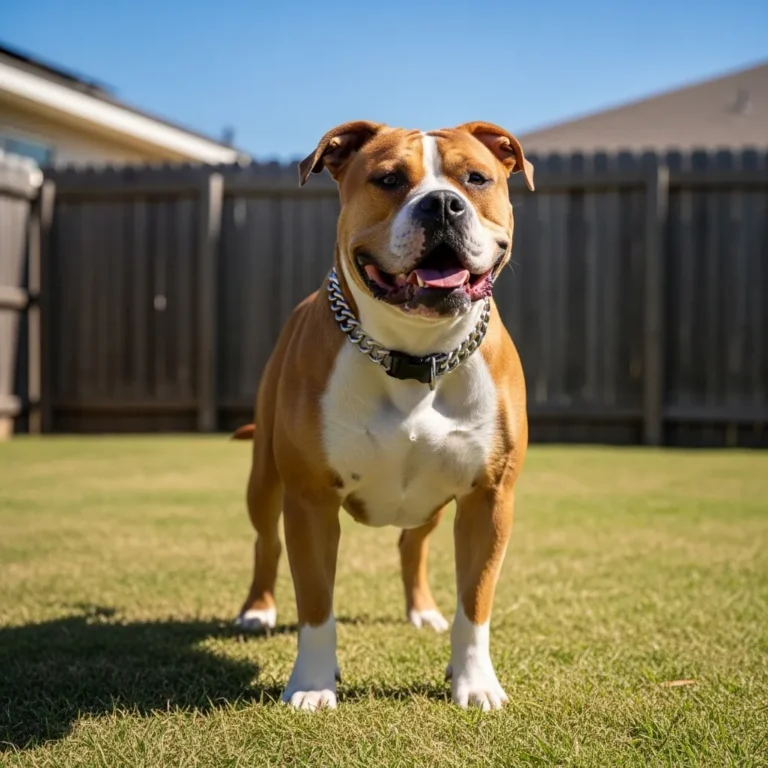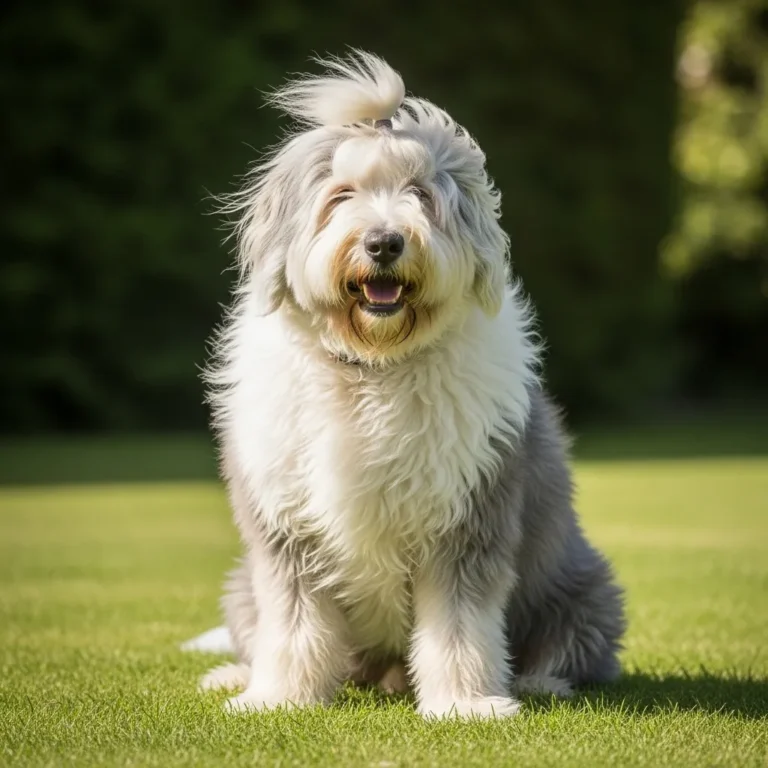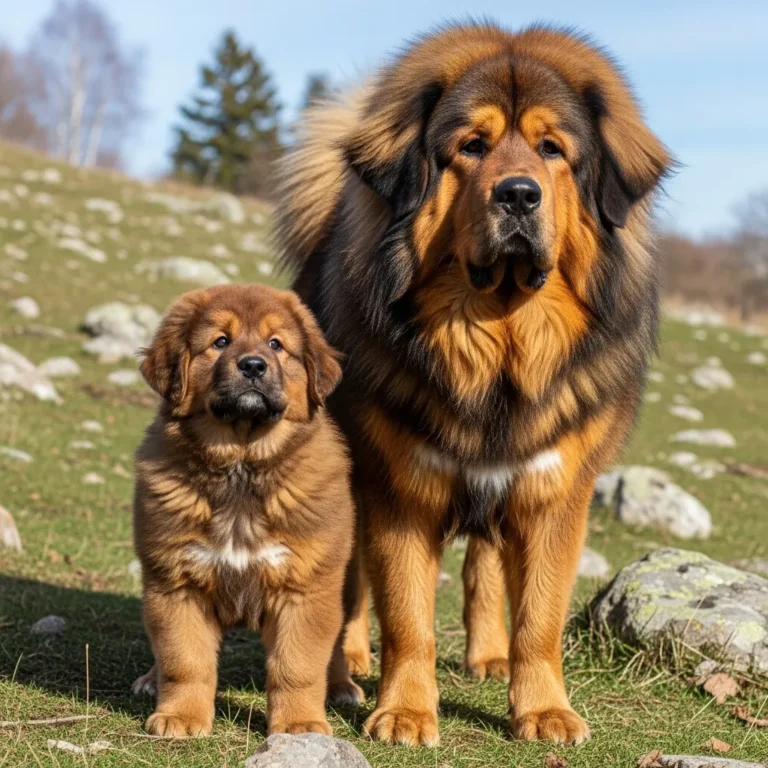
Author: DogsBlogSS Team
⚠️ Disclaimer: This article is for informational purposes only and is not a substitute for consulting a veterinarian.
american bulldogs
If you’re thinking about welcoming an American Bulldog into your life, you’re in for a treat. These dogs are loyal, athletic, and deeply affectionate—part gentle giant, part guardian. But with their strength and personality comes responsibility. To truly understand what owning one means, it helps to know not just how big they can grow or what they look like, but who they are: their temperament, health, history, and everything in between. In this guide, we’ll walk through the ins and outs of American Bulldogs, from their origins to their care, so you can decide if one is the right fit for your family.
Breed Overview & Identification
What Is an American Bulldog?

According to PetMD, The American Bulldog is a powerful, muscular breed that originated in the United States. Though its ancestors trace back to the Old English Bulldog, the breed evolved on American farms and homesteads, where they were prized for their strength and versatility. These dogs helped with cattle herding, guarding livestock, and protecting farms
According to PetPlace , They fell out of favor for a time, but revival efforts in the mid-20th century by dedicated breeders brought them back from near extinction. One of the most influential was John D. Johnson, a war veteran, whose breeding work helped rebuild the population.
Over time, American Bulldogs transformed from working farm dogs to beloved family companions—while keeping much of their guarding instincts.
What Are the Different Types of American Bulldogs? (Scott Type vs. Johnson Type vs. Hybrid)
Not all American Bulldogs are built exactly the same. Broadly, there are a few well-known “types”:
- According to PetsRadar, Scott type: Often called the standard or classic American Bulldog, this type descends from dogs preserved by breeder Alan Scott. They tend to be more athletic, with a longer muzzle and a leaner, more agile build.
- According to PetPlace, Johnson type: These trace their lineage to John D. Johnson’s lines. Johnson Bulldogs are generally heavier, more blocky in build, and have a broader head.
- Hybrid / modern mixes: Some American Bulldogs are mixed with other breeds (sometimes unintentionally). These dogs may inherit traits from bullmastiffs, pit bulls, or other working breeds, leading to variation in size, temperament, and health.
How Can You Tell the Difference Between a Johnson and a Scott American Bulldog?
Distinguishing between a Johnson-type and a Scott-type American Bulldog can usually be done by looking at their build and head shape:
- According to PetPlace, Johnson Bulldogs typically have a heavier, more muscular frame, with a broader chest, thicker neck, and a larger, square head.
- According to PetsRadar. Scott Bulldogs, on the other hand, tend to be more athletic and lithe, with longer legs, a less exaggerated muzzle, and a more streamlined look.
- Coat color and markings may also vary, but they’re not a reliable indicator of type in isolation.
Is the American Bulldog a Recognized Breed? (AKC/UKC Recognition Status)
According to PetPlace, Here’s where things get interesting: American Bulldogs are not recognized by the American Kennel Club (AKC) as a separate, pure breed.
According to Wikipedia, However, they are recognized by the United Kennel Club (UKC).
Because of this split in recognition, different breed registries and clubs may emphasize different “types” (Scott vs. Johnson), which can shape how breeders define their lines.
Temperament & Family Suitability (High Priority)
Are American Bulldogs Aggressive or Dangerous?
According to Dog Academy, It’s natural to worry about safety when you’re looking at a strong, muscular dog. But let me reassure you: American Bulldogs are not inherently aggressive toward people. In fact, they’re often described as confident, loyal, and affectionate with their families.
Still, due to their history as working and guarding dogs, they can be guard-oriented around strangers if not socialized well. According to PetMD, they may bark or become alert when something feels “off,” but with consistent training and early socialization, they generally make wonderful companions.
On Reddit, an owner shared:
“I won’t say that it’s impossible for them to bite but it’s much rarer and definitely out of character for there to be human aggression.”
This reflects the experiences of many dedicated and responsible owners.
Are American Bulldogs Good Family Dogs?
According to PetMD, Yes—they very much can be excellent family dogs. Their loyalty, intelligence, and strong bonds with their people make them reliable companions.
As Birt’s American Bulldogs’ owner Arlene Birt explains, these dogs “appreciate their humans and opt to be with them as opposed to being solitary.”
That said, they do best in homes where they have purpose, structure, and consistent training.
Do American Bulldogs Get Along Well With Children?
Many do. With proper socialization early on, American Bulldogs can be very good with kids. PetMD notes that well-trained and socialized individuals “can typically get along with … young children.”
Their protective nature can be a blessing, but because of their size and strength, supervision is always important, especially around small children. Teaching both dog and child respectful boundaries helps everyone feel safe and loved.
How Are American Bulldogs With Other Dogs and Cats? (Prey Drive and Dog-Selectivity)
According to We Love American Bulldogs, When socialized correctly, American Bulldogs can get along with other dogs—and sometimes even cats. According to Breed Trait guides, when raised together, they adapt well to other pets.
That said, some American Bulldogs may be selective with other dogs, particularly same-sex dogs:
According to We Love American Bulldogs, “American Bulldogs should generally only be housed with a dog of the opposite sex. American Bulldogs can be dog aggressive with members of the same sex.”
Their prey drive is not typically the same as high-drive hunting breeds, but they were working dogs—so introductions and socialization must be handled thoughtfully.
Are American Bulldogs Protective of Their Owners?
According to Zoetis Petcare, Absolutely. Protection is deeply ingrained in many American Bulldogs. Their history as guardians and farm defenders gives them a natural inclination to watch over their people. According to Zoetis Petcare, they are dependable, fearless, and trainable, and their territorial instincts can make them excellent watchdogs.
That said, in well-socialized dogs, this protection doesn’t usually mean aggression—it’s more about being alert and reliable.
Breed Comparisons (Common Confusion)
What Is the Difference Between an American Bulldog and an American Pit Bull Terrier (Pitbull)?
This is a very common question—and for good reason, as their appearances sometimes overlap. But there are key differences:
- According to Wikipedia, Origin & Purpose: Pit Bulls (American Pit Bull Terriers) were bred for agility, endurance, and sometimes unfortunately for fighting (in darker chapters of history), while American Bulldogs were bred primarily for farm work, guarding, and livestock handling.
- According to PetPlace, Size & Build: American Bulldogs are generally larger and more muscular, with a heavier bone structure compared to many Pit Bulls.
- Head Shape: American Bulldogs often have a broader, more pronounced skull and strong jaws; Pit Bulls tend to have a more moderate head shape.
- Temperament: Both breeds can be loyal and affectionate, but Bulldogs may lean more into guard dog tendencies; Pit Bulls may show higher energy and agility, depending on the dog and breeding.
In short: while they share “bully” in their histories, they are distinct breeds with different lineages and typical traits.
American Bulldog vs. English Bulldog: Which Is Right for Me?
At first glance, the names are similar—but these are very different dogs:
- According to PetPlace, Size: English Bulldogs are smaller and stockier; American Bulldogs are more athletic and taller.
- According to Purina, Health: English Bulldogs are notoriously brachycephalic (flat-faced), which can lead to breathing problems; American Bulldogs are less extreme, though they still have some risks.
- Energy Level: American Bulldogs are more energetic and need more exercise; English Bulldogs are more laid-back.
- Purpose: English Bulldogs are often companion dogs; American Bulldogs were working dogs and may have more drive and strength.
If you want a gentle couch companion, an English Bulldog could suit you. But if you’re looking for a strong, athletic, loyal guardian who can also be a family pet, an American Bulldog may be a better match.
American Bulldog vs. American Bully: Are They the Same?
According to Wikipedia, Nope, and the confusion is common. The American Bully is a separate breed altogether, developed more recently (1980s–1990s) by crossing various bully breeds.
Here are some differences:
- According to PetsRadar, Build: American Bullies are often more compact, stocky, and “blocky” in build, while American Bulldogs are more athletic and longer-bodied.
- According to Wikipedia, Recognition: The American Bully is recognized by the American Bully Kennel Club (ABKC), but not by AKC.
- Purpose: American Bullies were bred for companionship and breed-specific shows. American Bulldogs historically worked on farms and defended homesteads.
Though they share parts of their bull lineage, these breeds are quite different in temperament, build, and function.
Physical Characteristics & Growth
How Big Do American Bulldogs Get? (Height and Weight Chart)
According to PetMD and PetsRadar:
American Bulldogs are large, powerful dogs. Here’s a general guide to their size:
| Sex | Height (at the shoulder) | Weight Range |
|---|---|---|
| Male | ~22–25 inches (56–64 cm) | ~60–100 lbs (27–45 kg) |
| Female | ~20–23 inches (51–59 cm) | ~60–95 lbs, though some may be lighter or heavier depending on type |
These are approximate values. Individual dogs—especially hybrids—can fall outside these ranges.
When Do American Bulldogs Stop Growing?
American Bulldogs grow for quite a while. Their bones generally mature around 18 to 24 months, but they may continue filling out in muscle beyond that, especially large males. Because of their size, it’s important not to over-exercise them too early (like high-impact jumping) to protect their joints.
Do American Bulldogs Drool a Lot?
According to PetPlace, They can drool, but not as much as some other bulldog types. According to PetPlace, their drooling is moderate; much depends on the individual dog’s facial structure (loose jowls vs. tighter skin) and how much water and food they eat.
Because their coat is short, keeping their mouth and facial folds clean helps prevent drool-related skin issues.
Do American Bulldogs Have a Strong Bite Force?
American Bulldogs are strong dogs with sturdy jaws, given their muscular build and heritage. While there’s no precise, breed-standard “bite force” measure commonly published, anecdotal and working-dog stories highlight their power. However, it’s not about aggression—it’s about structure. Strength, when channeled responsibly through training and socialization, becomes one of their greatest assets.
Health, Lifespan, & Diet
What Is the Average Lifespan of an American Bulldog?
Most American Bulldogs live around 10 to 12 years, according to PetMD.
Some sources give a slightly wider range (up to 14 in very healthy lines), but 10–12 is commonly cited across expert breed guides.
related: Bland Diet for Dogs with Diarrhea or Colitis & pancreatitis
What Are the Common Health Issues in American Bulldogs? (Focus on Hip Dysplasia, Skin Allergies, and NCL)
American Bulldogs are generally robust, but like any large, muscular breed, they come with certain health considerations:
- According to PetsRadar, Hip and Elbow Dysplasia: One of the most notable issues. When the ball-and-socket joint doesn’t form correctly, it can lead to pain and arthritis later in life. Responsible breeders often screen for these conditions.
- According to PetMD , Skin Allergies & Ichthyosis: Allergies are common—dogs may scratch a lot, lick, or suffer recurrent ear infections.
A rarer but serious skin condition is ichthyosis, a genetic disorder where skin flakes, becomes dry, and needs special care. - According to Pet Guide, Neuronal Ceroid Lipofuscinosis (NCL): Some lines of American Bulldogs may carry a gene for NCL, a degenerative neurological condition.
- According to PetsRadar, Brachycephalic-Related Issues: While American Bulldogs are less flattened than English Bulldogs, they can still suffer from respiratory problems because of relatively short noses and narrow airways.
- According to PetPlace, Other Risks: According to PetPlace, American Bulldogs may also be predisposed to heart conditions, laryngeal paralysis, eye problems (such as cherry eye), and even bone cancer (osteosarcoma).
Are White American Bulldogs Prone to Deafness?
White-coated dogs in certain breeds can have a higher risk of congenital deafness, particularly when skin pigment and ear pigmentation are involved. While it’s not universal for all white American Bulldogs, it’s a potential concern in some lines. Breeders focused on health often screen for it, and responsible breeders should provide hearing test information for their litters.
How Much Should I Feed an American Bulldog? (Dietary Requirements for Large Breeds)
According to PetMD:
Good nutrition is critical for American Bulldogs, especially during growth:
- PetMD recommends feeding a large-breed formula both as a puppy and adult to support proper bone development and muscle growth.
- Puppies often eat three times a day early on; adult dogs usually move to two meals per day.
- Choose food that meets AAFCO (Association of American Feed Control Officials) standards.
- Avoid excessive treats: treats should make up no more than ~10% of daily calories.
- Supplements? Only under veterinarian guidance. For instance, joint supplements, fish oil, or probiotics may help—but always check with your vet first.
- For mental enrichment during meals, you can use puzzle feeders, snuffle mats, or slow-feed bowls, which PetMD suggests.
Care, Training, & Maintenance
Are American Bulldogs Easy to Train? (Intelligence vs. Stubbornness)
According to PetMD:
Yes, American Bulldogs are typically intelligent and eager to please—but they do have a stubborn streak. According to PetMD’s behavior and training section, they pick up cues quickly, especially when training is consistent, positive, and starts early.
Early socialization is especially important: exposing them to new people, places, and other animals helps shape a well-balanced adult.
It’s also wise to use positive reinforcement rather than harsh correction. These dogs respond well to praise, treats, and structure, and they thrive when they have defined roles in the family.
How Much Exercise Does an American Bulldog Need Daily?
According to PetMD, American Bulldogs are active dogs who need both physical and mental stimulation. According to PetMD, healthy adults typically need between 1 to 2 hours of exercise daily, depending on age and health.
Activities they enjoy include:
- Long walks
- Tug-of-war
- Agility or obstacle courses
- Nose work or scent games
- Hiking or swimming
- Obedience training
These outlets help prevent boredom, which might otherwise lead to destructive behavior.
Do American Bulldogs Shed a Lot? (Grooming Requirements)
According to PetMD:
One of the perks of the breed: low to moderate shedding. Their short coat is relatively easy to care for.
Here’s a simple grooming routine:
- Brushing: Once a week to remove loose hairs and distribute natural oils.
- Bathing: Only when necessary, using a dog-safe shampoo. Overbathing can dry out their skin.
- Facial folds / wrinkles: Regular cleaning is important to prevent infections. Wipe the folds daily or as needed.
- Ears: Weekly cleaning with a vet-approved cleanser helps prevent wax buildup and infections.
- Eyes: White American Bulldogs may get tear staining; gently clean with a pet-safe eye solution.
- Nails & Teeth: Trim nails regularly, and brush teeth or use dental chews to keep oral hygiene in check.
Can American Bulldogs Live in an Apartment?
According to PetPlace, It’s possible, but challenging. Because American Bulldogs are large, strong, and energetic, they do best in homes with space for movement. PetPlace even suggests that a small apartment may not be ideal.
If you do live in an apartment:
- Make sure you can provide daily exercise (long walks, trips to dog parks)
- Commit to training and mental stimulation
- Ensure your building allows large dogs
- Be prepared to manage drooling, vocalization, and energy
With the right commitment, it can work—but many American Bulldog owners prefer suburban or rural homes.
Legal & Financial Considerations
Are American Bulldogs Banned in the UK or Other Countries? (XL Bully Ban Confusion / BSL Laws)
Breed-specific legislation (BSL) is an important factor to consider. While American Bulldogs are not universally banned, confusion sometimes arises because “bully” breeds are subject to restrictions in certain areas. For example:
- According to Purina, There is no blanket UK ban specifically for American Bulldogs, but local councils might regulate certain breeds or sizes. According to Purina UK, they note legal and space considerations for large breeds.
- Sometimes, American-Bulldogs are mistakenly lumped in with XL Bully bans, even though they are different breeds. Knowing local laws and regulations before adopting or buying is essential.
Before adopting or purchasing, check with your country, state, or municipality to see whether there are restrictions on large or “bully-type” breeds.
How Much Do American Bulldog Puppies Cost?
The price of an American Bulldog puppy can vary widely, depending on breeder quality, lineage (Scott vs Johnson), geographical location, and whether the puppy is for show or companion. On average, you might pay anywhere from $1,500 to $3,500 USD or more for a well-bred, health-tested puppy. (Prices may vary significantly in other countries.)
Additionally, you’ll need to budget for:
- Veterinary checkups and vaccinations
- Microchipping
- Spay/neuter (if not already done)
- Puppy supplies (crate, bed, food, toys)
- Training costs
- Insurance, if you choose to cover potential health issues
Is It Better to Adopt or Buy an American Bulldog?
This is a deeply personal decision. Here are some pros and cons:
Adopt
- Pro: Gives a rescue dog a second chance
- Pro: Often less expensive upfront
- Con: You may not know full lineage or health history
- Con: Might be mixed breed, so future size and temperament could be less predictable
Buy from a Reputable Breeder
- Pro: Predictable lineage, size, and temperament
- Pro: Health testing (hip/elbow, ichthyosis, NCL) often done
- Con: Higher cost
- Con: Risk of supporting irresponsible breeding if you’re not careful
If you decide to buy, make sure to choose a reliable, ethical breeder who does genetic health screening, matches you with the right puppy for your lifestyle, and prioritizes the dogs’ wellbeing over profit.
Conclusion
American-Bulldogs are remarkable dogs—strong, loyal, and deeply affectionate. They bring a powerful presence, but also a heart that’s full of love for their families. They thrive when they have purpose, consistent training, and plenty of exercise.
If you’re ready for a large, energetic companion—and you’re willing to commit to their health needs, training, and lifestyle—an American-Bulldog could easily become one of the most rewarding members of your household. On the other hand, if your space, time, or budget are limited, it’s worth considering whether this breed is truly the right fit.
As with any dog, the key to success lies in responsible ownership: from choosing a good breeder or adopting wisely, to giving them the care, socialization, and affection they deserve. In return, you’ll get a devoted, courageous, and loving friend for years to come.
Notice : The DogsBlogSS editorial team is dedicated to providing accurate, research-based information about dog health, behavior, and care. All our articles are fact-checked using trusted veterinary sources such as VCA Hospitals, Merck Vet Manual, and the AKC.
you may like it






